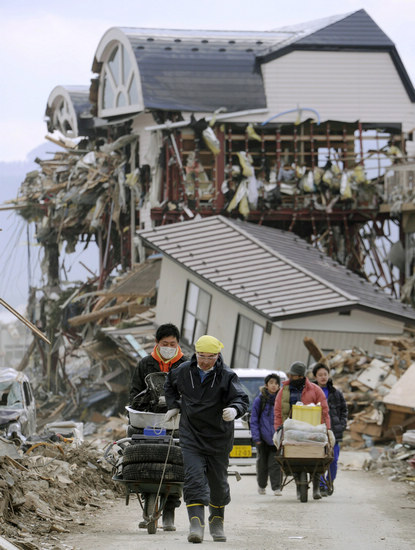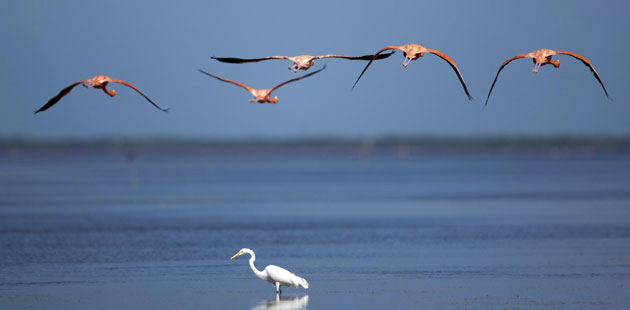Disasters make it the year of living dangerously
Updated: 2011-12-16 07:32
By Karl Wilson (China Daily)
|
|||||||||
Not enough planning
The World Bank said the Asia-Pacific region is the most disaster-prone region on Earth, accounting for more than 40 percent of the world's disasters and 65 percent of the people affected. From 1970 to 2010, the bank said, natural disasters resulted in more than 3.3 million deaths globally and left damage in excess of $2.3 trillion.
The ADB has warned that Asia, home to three-fifths of humanity, has by far the highest population density of any continent and the world's largest percentage of people living in poverty. As the region undergoes massive social and economic change, more people are migrating to urban centers along coastal areas, making them more vulnerable to harsh weather.
|
 |
|
JAPAN: Residents of Rikuzentakata, Iwate prefecture, salvage belongings eight days after their homes were ruined by the earthquake and tsunami on March 11. AP |
While wealthy countries such as Australia, Japan and New Zealand have the infrastructure to cope with major natural disasters, countries like Thailand are caught totally unprepared.
Vinod Thomas, a senior vice-president of the World Bank, said that about 50 developing countries face recurrent earthquakes, mudslides, floods, hurricanes and droughts, yet many of them do not seem to recognize they will recur. "Despite all these calamities, countries are still not fully prepared to respond adequately when disasters hit them," he said.
"External agencies often do not acknowledge these risks as a systematic threat to their assistance. For example, almost half of the countries borrowing from the World Bank for disaster response did not mention disaster prevention in their development plans. This situation must change.
"If we are ready to invest sizable funds to establish mechanisms to withstand financial crises, we need to do the same with the escalating hazards of nature," Thomas said. "Once the tragedy drops off newspapers' front pages, international donors, like the countries, find it hard to stay engaged with prevention efforts. This also means that the world's attention will no longer be fixed on natural disasters until the next big one hits us."
Earthquake zones
Asian and Pacific countries have also a high vulnerability to the impact of disasters apart from those related to weather. A number of countries sit on the so-called Pacific Ring of Fire - the fault line that runs round the Pacific basin from Japan to New Zealand and along the west coast of the Americas and is responsible for much of the volcanic and earthquake activity.
With increasing urbanization, migration patterns and population growth, people are occupying high-risk areas in greater numbers than ever, increasing their vulnerability to disaster impacts, the World Bank has said.
Natural disasters affect the economy immediately and directly, as well as having a long-term impact. In most disasters, the bulk of immediate damage comes from destroyed assets such as buildings, infrastructure, inventories and crops.
Disasters do not respect borders or distinguish between income levels, no matter how different the effects of disasters on human lives could be.
That could be the first and most important lesson from 2011.
Write to the reporter at karlwilson@chinadailyapac.com.











